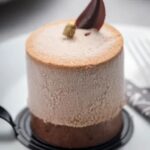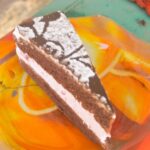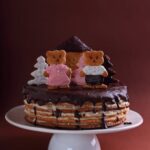Are you looking for a way to add some flair to your plain cake? In this article, we will explore how to decorate a plain cake, taking it from simple and ordinary to stunning and delicious.
Decorating a plain cake is an essential skill for any baker, as it can elevate the overall presentation of the dessert and make it a showstopper at any event. Whether you’re a beginner or an experienced baker looking to expand your decorating skills, we have all the tips and techniques you need to create a masterpiece.
When it comes to decorating a cake, starting with the right base is crucial. We will discuss the best type of cake to use for decorating, including tips on texture and flavor. Additionally, we will provide guidance on choosing the perfect tools and ingredients needed for successful cake decorating, ensuring that you are fully prepared for the task at hand.
In this article, we will also delve into various frosting and icing techniques, providing step-by-step instructions for creating the perfect base layer. And if you’re new to cake decorating, don’t worry – we will cover simple decorative techniques such as piping, spreading, and using edible decorations. For those who are more experienced or adventurous, we will introduce advanced decorative techniques such as fondant work, sugar flowers, and intricate designs.
No matter your skill level, there’s something here for everyone. So let’s roll up our sleeves and get ready to transform that plain cake into a work of art.
Choosing the Right Cake
When it comes to decorating a plain cake, choosing the right type of cake is essential for a successful outcome. The texture and flavor of the cake will greatly impact how well it holds up to decorations and how it complements the overall taste of the dessert. Here are some tips on choosing the best type of cake for decorating:
Texture Matters
The texture of the cake plays a crucial role in how well it can be decorated. A sturdy and dense cake such as pound cake or carrot cake is ideal for intricate decorations that require stability. On the other hand, a light and fluffy sponge cake works well with simpler decorations like whipped cream frosting and fresh fruit. Consider the type of decorations you plan to use when deciding on the texture of your cake.
Flavor Profile
The flavor of the cake should also be taken into account when decorating. If you’re planning to use rich and bold flavors in your decorations, such as chocolate ganache or citrus-flavored icing, choose a plain vanilla or butter cake as your base.
This will ensure that the flavors complement each other rather than compete for attention. Similarly, if you’re using delicate flavors like rosewater or lavender in your decorations, opt for a subtle flavored cake that won’t overpower these accents.
When selecting a cake for decorating, keep in mind that it should serve as a canvas for your creative designs while also contributing to the overall taste experience. By paying attention to both texture and flavor, you can ensure that your decorated plain cake is not only visually stunning but also delectably delicious.
Basic Tools and Ingredients
Decorating a plain cake can seem like a daunting task, but with the right tools and ingredients, it can be a fun and rewarding experience. Before diving into the world of cake decorating, it’s essential to ensure that you have all the necessary tools and ingredients at your disposal. This section will provide a comprehensive list and explanation of the essential items needed to decorate a plain cake, ensuring that readers are fully prepared for the creative process.
The first essential tool for decorating a plain cake is a good quality offset spatula. This handy tool is perfect for spreading frosting evenly across the surface of the cake, creating a smooth and professional-looking finish. Additionally, having an assortment of piping tips and bags is crucial for creating beautiful designs and patterns with frosting or icing. From intricate borders to decorative flowers, piping tips allow for endless possibilities when it comes to decorating a cake.
In addition to tools, having the right ingredients on hand is equally important when decorating a cake. High-quality butter, powdered sugar, and pure vanilla extract are key components in making delicious frosting or icing. It’s also important to have food coloring gels or powders in various colors to add vibrant hues to your decorations.
Lastly, don’t forget about edible decorations such as sprinkles, edible glitter, or fondant shapes that can take your cake design to the next level. By ensuring that you have all these essential tools and ingredients at your disposal, you’ll be equipped to create beautifully decorated cakes with ease.
Frosting and Icing Techniques
Creating a delicious and visually appealing base layer of frosting or icing is essential when decorating a plain cake. The right technique can elevate the overall presentation of the dessert and provide a smooth canvas for further decorations.
Choosing the Right Frosting or Icing
When it comes to frosting or icing a plain cake, it’s crucial to choose the right type for your desired outcome. Buttercream frostings are popular for their creamy texture and ease of use, while fondant icings provide a smooth finish ideal for more intricate designs. It’s important to consider the flavor profile of the frosting as well, ensuring it complements the flavor of the cake itself.
Steps for Applying Frosting or Icing
To achieve a perfectly frosted or iced cake, start by placing a thin layer of frosting on top of the cake to seal in crumbs-a technique known as crumb coating. Once this layer sets, apply a thicker layer of frosting using an offset spatula, working from the top to the sides to create an even finish.
For fondant icing, roll out the fondant to the desired thickness, then carefully drape it over the cake before smoothing it down with gentle strokes.
Tips for Smooth Finishes
For buttercream frostings, dipping an offset spatula in hot water can help achieve a smoother finish on the cake’s surface. When working with fondant icing, gently smoothing out any air bubbles and creases is essential for a flawless appearance. Taking your time during this process will ensure that your base layer looks professional and polished.
By mastering these basic techniques for applying frosting or icing to a plain cake, you’ll be well on your way to creating beautiful and eye-catching desserts that are sure to impress any audience.
Simple Decorative Techniques
Decorating a plain cake doesn’t have to be intimidating, especially for beginners. There are simple and beginner-friendly techniques that can elevate the appearance of a cake without requiring advanced skills or experience. One of the easiest ways to decorate a plain cake is by using piping techniques.
This involves using a piping bag and various tips to create different designs and patterns on the cake’s surface. Whether it’s creating rosettes, stars, or simple lines, piping allows for creativity and customization.
Another straightforward way to decorate a plain cake is by spreading frosting or icing in an even layer on top. Using an offset spatula or a bench scraper, smooth out the frosting for a clean and polished look.
This method is great for those who prefer a minimalistic approach to decorating but still want a professional finish. Additionally, using edible decorations such as sprinkles, edible glitter, or chocolate shavings can add texture and visual appeal to a plain cake without much effort.
For those who want to take their beginner skills up a notch, trying out basic fondant work can also be considered. Fondant is a versatile decorating material that can be rolled out and draped over cakes for a smooth finish. Simple shapes and cut-outs can also be created with fondant to add decorative elements to the cake. These techniques provide room for experimenting with different colors, textures, and designs while still being manageable for those new to cake decorating.
As you begin exploring these easy techniques, remember that practice makes perfect. Don’t be discouraged if your first attempt isn’t flawless – every baker starts somewhere. With time and patience, you’ll develop your skills and confidence in decorating plain cakes, opening the door to more advanced techniques down the road.
Advanced Decorative Techniques
Decorating a cake in an advanced manner can seem daunting for beginners, but with the right techniques and guidance, it can be a creative and rewarding process. Fondant work is a popular method for creating intricate designs and decorations on cakes. This technique involves using a pliable sugar paste that can be molded, sculpted, and shaped into various designs. From elegant ribbons to lifelike flowers, fondant allows for endless creative possibilities.
Another advanced decorative technique to consider is working with sugar flowers. These delicate and realistic-looking blooms are handmade using gum paste or fondant. With practice and patience, one can create exquisite floral arrangements to adorn plain cakes, adding an extra touch of elegance and sophistication.
In addition to fondant work and sugar flowers, mastering intricate designs on cakes is another advanced skill worth exploring. Whether it’s piping intricate lace patterns or creating detailed 3D embellishments, this level of cake decorating requires precision and practice. However, the stunning results make the effort worthwhile.
Mastering advanced cake decorating techniques may take time and patience, but the end result is nothing short of impressive. With these skills in hand, bakers can transform plain cakes into works of art that will leave a lasting impression on anyone who sees or tastes them.
| Advanced Decorative Techniques | Description |
|---|---|
| Fondant Work | A method for creating intricate designs and decorations using pliable sugar paste. |
| Sugar Flowers | Delicate, realistic-looking blooms handmade using gum paste or fondant. |
| Intricate Designs | Detailed 3D embellishments created through precise piping or other design methods. |
Theme and Occasion Ideas
When it comes to decorating a plain cake, the theme and occasion play an important role in the overall design. Whether it’s for a birthday, holiday, or just a simple gathering, choosing the right theme can elevate the presentation of the cake and make it more memorable. Here are some ideas for different themes and occasions to consider when decorating a plain cake:
- Birthday Parties: A classic theme for cake decoration, birthdays offer endless possibilities for creativity. Consider using the birthday person’s favorite colors, characters, or hobbies as inspiration for the cake design.
- Weddings: For weddings, cakes are often elegant and sophisticated. Incorporate elements from the wedding decor such as flowers, lace patterns, or the couple’s initials to create a stunning centerpiece for the reception.
- Holidays: Holidays like Christmas, Halloween, Easter, and Valentine’s Day provide a fun opportunity to decorate cakes with festive themes. Use seasonal colors, shapes, and decorations to capture the spirit of the holiday.
- Graduations: Celebrate academic achievements with a themed cake that showcases school colors, graduation caps, diplomas, or even a personalized message congratulating the graduate.
- Baby Showers: When decorating cakes for baby showers, pastel colors and adorable baby-themed decorations like rattles, booties, or storks can create a charming and sweet design that’s perfect for celebrating a new arrival.
No matter the theme or occasion you choose for your decorated cake, always remember that personal touches make all the difference in creating a memorable dessert. The key is to have fun with your creations while keeping in mind the preferences and style of those you are celebrating. With these ideas in mind and some creative inspiration at hand, you’re well on your way to crafting beautifully decorated cakes for any event.
Troubleshooting
Decorating a plain cake can be a fun and rewarding experience, but it’s not without its challenges. Many novice decorators may encounter common pitfalls that can be discouraging. However, with the right knowledge and solutions, these issues can be easily overcome. Below are some common decorating problems and how to troubleshoot them:
- Problem: Uneven or Crumbly Frosting
- Solution: Make sure the cake is completely cooled before frosting it to prevent the frosting from melting or becoming too runny. Additionally, consider using a crumb coat – a thin layer of frosting applied before the final layer – to keep any loose crumbs from ruining the finished look.
- Problem: Runny Icing or Piping Consistency
- Solution: If your icing or piping consistency is too runny, try adding more powdered sugar to thicken it. For fondant or gum paste, knead in more confectioner’s sugar until it reaches the desired consistency.
- Problem: Wilting Fresh Flowers or Toppers
- Solution: For fresh flowers, make sure they are cut just before placing on the cake and are inserted into floral picks or food-safe tubes to keep them from wilting. Edible toppers like chocolates should be added just before serving to avoid melting due to room temperature.
By being aware of these potential issues and knowing how to troubleshoot them, even beginners can have a successful decorating experience when it comes to creating a beautifully adorned plain cake.
Remember that practice makes perfect. Don’t be discouraged if your first attempt doesn’t turn out exactly as planned. With patience and perseverance, you’ll soon become an expert cake decorator.
Conclusion
In conclusion, decorating a plain cake can truly elevate the overall presentation and appeal of the dessert. From choosing the right type of cake to mastering basic and advanced decorative techniques, there are endless opportunities to showcase creativity and talent. By following the tips and guidelines provided in this article, readers can feel confident in their ability to create beautifully decorated cakes for any occasion.
It’s important to remember that practice makes perfect when it comes to cake decorating. Don’t be discouraged if your first attempt doesn’t turn out exactly as you envisioned. With time and experience, you will improve your skills and develop your own unique style. The key is to have fun with the process and enjoy experimenting with different techniques and designs.
Whether it’s a birthday, holiday, or simply a special gathering with loved ones, a beautifully decorated cake can be the centerpiece of any celebration. With the knowledge gained from this article, readers have the tools and inspiration to create stunning cakes that will leave a lasting impression on their guests. So go ahead, roll up your sleeves, and try your hand at decorating a plain cake – you might just discover a new passion in the process.

Welcome to my blog about home and family. This blog is a place where I will share my thoughts, ideas, and experiences related to these important topics. I am a stay-at-home mom with two young children. I hope you enjoy reading it! and may find some helpful tips and ideas that will make your home and family life even better!





